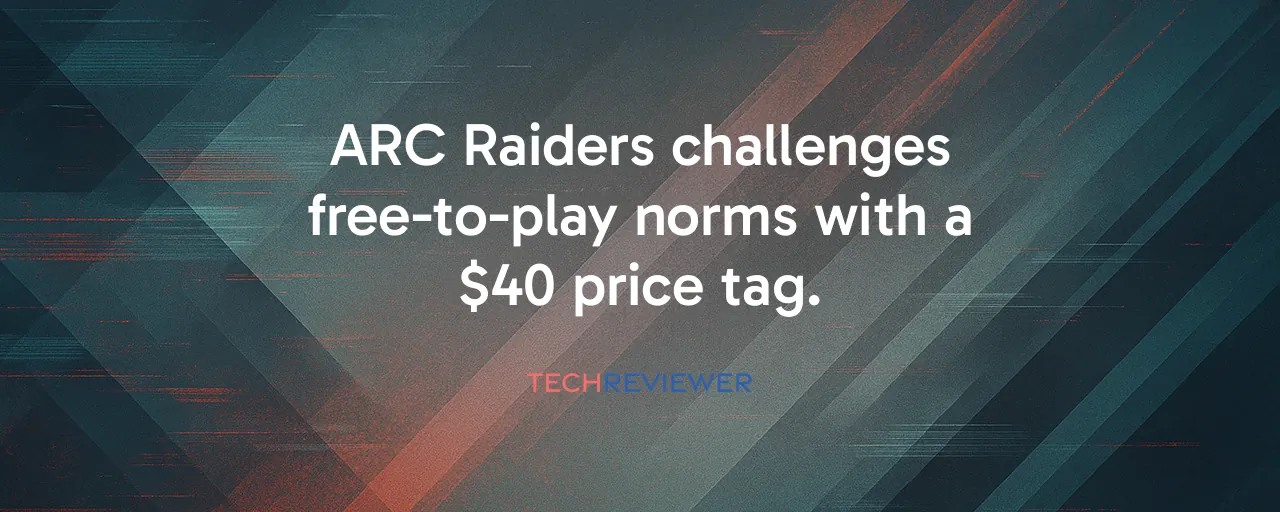A Bold Price in a Free-to-Play World
When Embark Studios announced ARC Raiders would cost $39.99, the gaming community buzzed with questions. In a world where Fortnite and Apex Legends let players jump in for free, charging upfront for a multiplayer extraction shooter feels like a gamble. Yet Embark, fresh off the success of their free-to-play hit The Finals, seems confident. Their reasoning? A premium price lets them focus on polished gameplay without the baggage of pay-to-win mechanics. ARC Raiders, set to launch October 30, 2025, on PlayStation 5, Xbox Series X/S, and PC, dives into a post-apocalyptic world where players battle robotic enemies and rival raiders. But can a $40 price tag hold up in a genre where free is the norm?
The decision came into sharp focus during the Server Slam beta from October 17 to 19, 2025, when peak concurrent player count on Steam reached 189,668. They fired 30 million rounds and snagged 816,162 rubber ducks, a quirky collectible that hints at Embark’s playful streak. The beta showed a game that feels finished, with dynamic AI enemies like Wasps and massive Queen units that demand teamwork. Still, the choice to go premium has sparked debate. Players used to Escape from Tarkov’s hardcore grind or Warzone’s accessibility wonder if ARC Raiders can justify its cost.
Learning From The Finals’ Free-to-Play Win
Embark Studios knows how to make a multiplayer hit. Their 2023 release, The Finals, pulled in 10 million players in just two weeks by offering a free-to-play arena shooter with cosmetic-only purchases. That success proved Embark could build a vibrant community without charging upfront. The game’s battle pass and microtransactions funded ongoing updates while keeping gameplay fair, a model players praised. So why go premium with ARC Raiders? Executive producer Aleksander Grondal says it’s about freedom to craft a balanced experience without the pressure of designing around in-game purchases.
The Finals’ triumph shows the power of accessibility. By removing the cost barrier, Embark built a massive player base, ensuring quick matchmaking and a lively ecosystem. ARC Raiders, with its $39.99 standard edition and $59.99 deluxe version, takes a different path. The deluxe edition tosses in extras like 2,400 Raider Tokens and a cowboy-themed outfit, tempting fans to splurge. But the upfront cost could shrink the player pool, a risky move for a genre that thrives on network effects. If matchmaking slows or servers feel empty, players might drift away.
The Concord Crash: A Cautionary Tale
Sony’s Concord offers a stark warning about premium multiplayer games. Launched in August 2024 at $40, the hero shooter tanked with just 25,000 sales before shutting down, a $400 million disaster. Its failure stemmed from a crowded market, weak marketing, and little to set it apart from free-to-play giants like Overwatch. Concord’s collapse shows the peril of charging for a multiplayer game when players expect free entry. ARC Raiders faces a similar challenge, competing in a 2025 extraction shooter frenzy alongside Bungie’s Marathon, Sharkmob’s Exoborne, and others.
Unlike Concord, ARC Raiders has a few advantages. Its beta performance signals strong interest, and Embark’s regional pricing, like $27.79 in India, makes it more accessible globally. The game’s third-person perspective and modular robot destruction, where players can target enemy components for strategic takedowns, add depth. Yet the lack of human AI enemies and occasional loot scarcity, as noted in beta feedback, could frustrate players expecting constant rewards. Embark’s challenge is to prove the game’s value before players commit their cash.
The Price of Ambition
Embark’s premium model isn’t just about revenue; it’s a bet on quality. By charging upfront, they avoid the pitfalls of free-to-play economies that often lean on aggressive monetization. ARC Raiders’ crafting systems, three diverse maps, and 30-minute raid timer aim to deliver a tight, replayable experience. Cross-platform play across consoles and PC, plus solo-friendly matchmaking, broadens its appeal. The battle pass, priced at 500 Raider Tokens, offers cosmetic rewards and weapon schematics, but Embark insists all gameplay content stays accessible without extra purchases.
Still, the competition is fierce. Bungie’s Marathon, launching a month earlier in September 2025, benefits from a loyal fanbase and Destiny’s pedigree. Other titles like PUBG Black Budget and Off the Grid add to the 2025 bloodbath, where only a few shooters may survive. Industry analyst Mat Piscatella warns the market can’t support multiple AAA extraction shooters, predicting a shakeout. ARC Raiders’ success hinges on keeping players hooked post-launch with regular updates and a vibrant community, a tall order in a genre where free-to-play often wins.
What’s Next for ARC Raiders?
As October 30, 2025, approaches, ARC Raiders stands at a crossroads. Its premium price could fund a polished, evolving game, but it risks alienating players used to free-to-play accessibility. Embark’s track record with The Finals gives hope, but the extraction shooter genre demands a big, consistent player base. Regional pricing and cross-platform play help, but the game needs to stand out in a crowded field. If Embark nails the launch with engaging content and responsive updates, ARC Raiders could carve out a niche. If not, it might fade like Concord.
The bigger question is whether premium pricing can work for extraction shooters long-term. The genre’s niche appeal, built on high-stakes risk and reward, doesn’t guarantee mainstream success. Players dodging robotic Leapers in a crumbling cityscape might love the thrill, but they’ll need to see value beyond the $40 entry fee. For now, ARC Raiders is a bold experiment, and its outcome could shape how developers approach multiplayer pricing for years to come.
